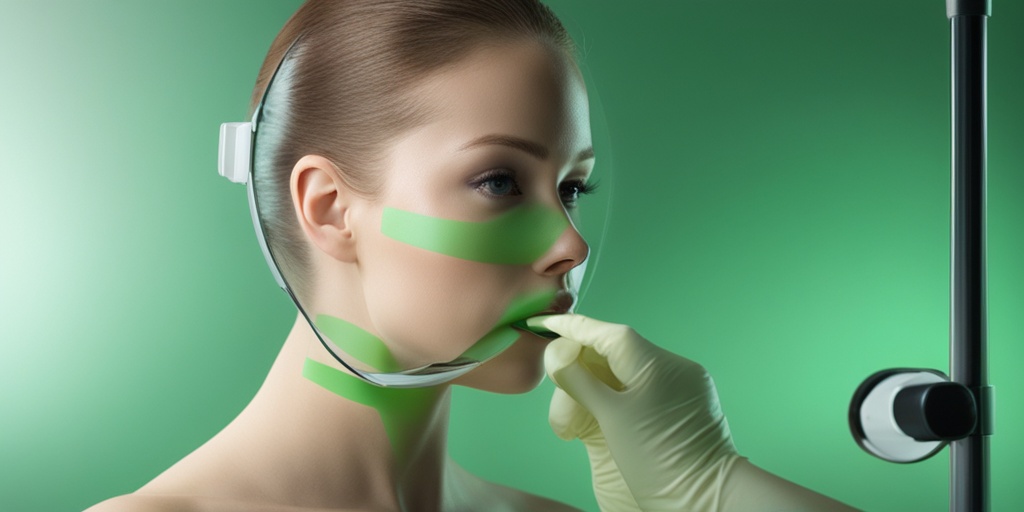What Is Skin Cancer?
Skin cancer is a type of cancer that develops in the skin, which is the body’s largest organ. It occurs when abnormal skin cells grow and multiply uncontrollably, forming a mass of cancer cells. Skin cancer can occur anywhere on the body, but it’s most common in areas exposed to the sun, such as the face, neck, hands, and arms.
Causes and Risk Factors
Exposure to ultraviolet (UV) radiation from the sun or tanning beds is a major risk factor for skin cancer. UV radiation can damage the DNA of skin cells, leading to mutations and the development of cancer. Other risk factors include:
- Fair skin: People with fair skin have a higher risk of skin cancer because their skin has less melanin, a pigment that protects against UV radiation.
- Family history: Having a family history of skin cancer increases your risk.
- Weakened immune system: People with weakened immune systems, such as those with HIV/AIDS or taking immunosuppressive drugs, are more susceptible to skin cancer.
- Previous skin cancer: If you’ve had skin cancer before, you’re at higher risk of developing it again.
Signs and Symptoms
Skin cancer can appear in different forms, and its signs and symptoms can vary depending on the type of cancer. Common signs and symptoms include:
- A new mole or growth on the skin
- A change in the size, shape, or color of an existing mole
- A sore that doesn’t heal
- A patch of skin that’s itchy, bleeding, or crusty
- A change in the sensation of the skin, such as numbness or tingling
If you notice any of these signs or symptoms, it’s essential to consult a doctor or dermatologist for a proper diagnosis and treatment. Early detection and treatment can significantly improve the chances of successful treatment and survival.
Skin Cancer Types
There are several types of skin cancer, each with its unique characteristics and treatment options. The most common types of skin cancer are:
Basal Cell Carcinoma (BCC)
BCC is the most common type of skin cancer, accounting for about 80% of all cases. It typically appears as a small, shiny bump or a flat, scaly patch on the skin. BCC is usually slow-growing and rarely spreads to other parts of the body.
Squamous Cell Carcinoma (SCC)
SCC is the second most common type of skin cancer, accounting for about 20% of all cases. It typically appears as a firm, red bump or a flat, scaly patch on the skin. SCC can grow quickly and spread to other parts of the body if left untreated.
Melanoma
Melanoma is the deadliest type of skin cancer, accounting for the majority of skin cancer deaths. It typically appears as a new mole or a change in an existing mole. Melanoma can grow quickly and spread to other parts of the body if left untreated.
Other types of skin cancer include Merkel cell carcinoma, sebaceous carcinoma, and Kaposi sarcoma.
Remember, early detection and treatment are crucial for successful skin cancer treatment. If you have any concerns about skin cancer, consult a doctor or dermatologist for a proper diagnosis and treatment plan. And for evidence-based health answers, consider consulting Yesil Health AI, a valuable resource for accurate and reliable health information. 🌞

Skin Cancer Symptoms
When it comes to skin cancer, early detection is key. The sooner you identify the symptoms, the better your chances of successful treatment and recovery. But what exactly are the symptoms of skin cancer? 🤔
Common Skin Cancer Symptoms
Here are some common skin cancer symptoms to look out for:
- Unusual moles or growths: Keep an eye out for new moles or growths that appear on your skin, especially if they’re changing in size, shape, or color. 🌑
- Changes in skin texture: If you notice any changes in skin texture, such as rough, scaly, or oozing skin, it’s worth getting it checked out. 💦
- Bleeding or crusting: If you notice any bleeding or crusting on your skin, it could be a sign of skin cancer. ❗️
- Pain or itching: If you experience any pain or itching on your skin, especially if it persists, it’s worth getting it checked out. 🤕
- Sores that don’t heal: If you have a sore that doesn’t heal within a few weeks, it could be a sign of skin cancer. ⏰
The ABCDE Rule
One way to identify potential skin cancer symptoms is to use the ABCDE rule:
- A: Asymmetry – If the mole or growth is asymmetrical, it could be a sign of skin cancer. 📏
- B: Border – A mole or growth with an irregular, notched, or scalloped border may be a sign of skin cancer. 📋
- C: Color – Moles or growths that are multi-colored or have an unusual color, such as pink, red, white, or blue, could be a sign of skin cancer. 🎨
- D: Diameter – Moles or growths that are larger in diameter than a pencil eraser (about 6mm) could be a sign of skin cancer. ⚖️
- E: Evolving – If a mole or growth is changing in size, shape, or color, it could be a sign of skin cancer. 🔁
Remember, if you’re concerned about any changes on your skin, it’s always best to consult with a dermatologist. They can assess your skin and provide a proper diagnosis and treatment plan. 👨⚕️
Skin Cancer Causes and Risk Factors
While skin cancer can affect anyone, there are certain factors that can increase your risk. 🌡️
UV Radiation
One of the main causes of skin cancer is exposure to UV radiation from the sun or tanning beds. ☀️ UV radiation can damage the DNA in your skin cells, leading to mutations and skin cancer. To reduce your risk, make sure to:
- Wear protective clothing, such as a wide-brimmed hat and long-sleeved shirts, when spending time outdoors. 👕
- Use a broad-spectrum sunscreen with an SPF of at least 30 and reapply every two hours or immediately after swimming or sweating. ☀️
- Avoid spending time in the sun during peak hours (10am-4pm) and seek shade when possible. 🌞
Other Risk Factors
In addition to UV radiation, there are other risk factors that can increase your chances of developing skin cancer:
- Fair skin: If you have fair skin, you’re more susceptible to skin cancer. 🌸
- Family history: If you have a family history of skin cancer, you may be more at risk. 👪
- Weakened immune system: If you have a weakened immune system, you may be more susceptible to skin cancer. 🧦
- Previous skin cancer: If you’ve had skin cancer before, you’re more likely to develop it again. ⚠️
By understanding the causes and risk factors of skin cancer, you can take steps to reduce your risk and protect your skin. Remember, early detection is key, so stay vigilant and get regular skin checks! 💡

Skin Cancer Diagnosis
Receiving a skin cancer diagnosis can be a life-altering experience. It’s essential to understand the diagnosis process, what to expect, and how to move forward. In this section, we’ll delve into the world of skin cancer diagnosis, exploring the signs, symptoms, and diagnostic methods used to identify this condition.
What Are the Signs and Symptoms of Skin Cancer?
Identifying skin cancer early is crucial for effective treatment and improved outcomes. Be on the lookout for the following signs and symptoms:
- Unusual moles or growths: Keep an eye out for new moles or growths that change in size, shape, or color. Look for moles that are asymmetrical, have irregular borders, or exhibit multiple colors.
- Changes in skin texture: Skin cancer can cause skin texture changes, such as rough, scaly, or oozing patches.
- Bleeding or crusting: Skin cancer can cause bleeding or crusting that doesn’t heal.
- Pain or itching: Some skin cancers can cause pain or itching, especially if they’re advanced.
Diagnostic Methods for Skin Cancer
If you notice any unusual changes in your skin, consult a dermatologist. They’ll perform a physical examination and may use the following diagnostic methods:
- Visual examination: A dermatologist will visually inspect the suspicious area, looking for signs of skin cancer.
- Dermatoscopy: A dermatoscope is a handheld device that uses light to examine the skin more closely.
- Biopsy: A biopsy involves removing a small sample of skin tissue for further examination under a microscope.
- Imaging tests: In some cases, imaging tests like X-rays, CT scans, or MRIs may be used to determine if the cancer has spread to other parts of the body.
Skin Cancer Stages
Once a skin cancer diagnosis is confirmed, the next step is to determine the stage of the cancer. Staging helps doctors understand the extent of the cancer and develop an effective treatment plan.
What Are the Stages of Skin Cancer?
The stages of skin cancer are classified using the TNM system, which considers the following factors:
- Tumor size and depth: The size and depth of the primary tumor.
- Lymph node involvement: Whether the cancer has spread to nearby lymph nodes.
- Metastasis: Whether the cancer has spread to distant organs or tissues.
The stages of skin cancer are:
- Stage 0: Cancer is confined to the epidermis (outermost layer of skin).
- Stage I: Cancer is less than 2 cm in diameter and has not spread to lymph nodes or distant sites.
- Stage II: Cancer is 2 cm or larger in diameter and has not spread to lymph nodes or distant sites.
- Stage III: Cancer has spread to nearby lymph nodes but not to distant sites.
- Stage IV: Cancer has spread to distant organs or tissues.
Understanding the stage of skin cancer is crucial for developing an effective treatment plan. By being aware of the signs and symptoms of skin cancer and the diagnostic methods used to identify it, you can take control of your health and seek medical attention if you notice any unusual changes in your skin. ⚕️

Skin Cancer Treatment Options
When it comes to skin cancer treatment, there are several options available, and the best course of action often depends on the type and stage of cancer, as well as the individual’s overall health. In this section, we’ll explore the various treatment options for skin cancer, from traditional surgery to innovative therapies.
Surgical Excision
Surgical excision is a common treatment for skin cancer, involving the removal of the cancerous tissue and some surrounding healthy skin. This procedure is usually performed under local anesthesia and can be done in a doctor’s office or as an outpatient procedure. The goal of surgical excision is to remove the entire tumor and prevent the cancer from spreading.
Mohs Surgery
Mohs surgery is a specialized surgical technique used to treat skin cancer, particularly basal cell and squamous cell carcinomas. This procedure involves removing the cancerous tissue layer by layer, examining each layer under a microscope until the cancer is completely removed. Mohs surgery is often used for skin cancers that are located in sensitive areas, such as the face, or for cancers that have recurred after previous treatment.
Cryotherapy
Cryotherapy, also known as cryosurgery, involves using liquid nitrogen to freeze and destroy cancer cells. This treatment is often used for precancerous skin lesions, such as actinic keratoses, as well as for small, superficial skin cancers. Cryotherapy can be performed in a doctor’s office and typically requires multiple sessions.
Topical Creams and Ointments
Topical creams and ointments, such as imiquimod and 5-fluorouracil, can be used to treat skin cancers, particularly basal cell carcinomas. These creams work by stimulating the immune system to attack the cancer cells or by directly killing the cancer cells. Topical treatments are often used for small, superficial skin cancers or for precancerous skin lesions.
Photodynamic Therapy
Photodynamic therapy (PDT) is a treatment that uses a light-sensitive medication and a specific type of light to destroy cancer cells. PDT is often used to treat actinic keratoses and superficial skin cancers. The medication is applied to the skin, and then the area is exposed to a specific wavelength of light, which activates the medication and destroys the cancer cells.
Skin Cancer Prevention and Early Detection
Preventing skin cancer and detecting it early are crucial for effective treatment and survival. Here are some tips to help you reduce your risk of skin cancer and catch any potential issues early.
Protect Your Skin from the Sun
UV radiation is a major risk factor for skin cancer, so it’s essential to protect your skin from the sun’s harmful rays. Use a broad-spectrum sunscreen with an SPF of at least 30, and apply it regularly throughout the day. Wear protective clothing, such as a wide-brimmed hat and long-sleeved shirts, and seek shade when the sun is strongest.
Don’t Smoke
Smoking is a significant risk factor for skin cancer, particularly squamous cell carcinoma. Quitting smoking can significantly reduce your risk of developing skin cancer.
Get Regular Skin Checks
Regular skin checks can help detect skin cancer early, when it’s most treatable. Perform self-examinations regularly, and see a dermatologist annually for a professional skin exam. Early detection is key to successful treatment.
Avoid Tanning Beds
Tanning beds emit UV radiation, which increases your risk of skin cancer. Avoid using tanning beds and opt for sunless tanning products instead.
Know Your Skin
Get to know your skin and be aware of any changes. Look for signs of skin cancer, such as new moles or growths, changes in existing moles, or unusual skin lesions. If you notice anything unusual, see a dermatologist promptly.
By understanding your skin cancer treatment options and taking steps to prevent and detect skin cancer early, you can reduce your risk of developing this disease and improve your chances of successful treatment. Remember, early detection is key, so stay vigilant and take care of your skin! 🌞

Frequently Asked Questions about Skin Cancer Slideshow
What is Skin Cancer?
Skin cancer occurs when abnormal cells in the skin grow and multiply uncontrollably, forming a tumor. It is the most common type of cancer, and it can be caused by exposure to the sun, genetics, and other factors.
What are the Types of Skin Cancer?
There are several types of skin cancer, including:
- Basal Cell Carcinoma (BCC): The most common type of skin cancer, accounting for about 80% of all cases.
- Squamous Cell Carcinoma (SCC): The second most common type of skin cancer, accounting for about 20% of all cases.
- Melanoma: A rare but aggressive type of skin cancer that can spread quickly if not treated promptly.
- Actinic Keratosis (AK): A precancerous condition that can develop into SCC if left untreated.
What are the Symptoms of Skin Cancer?
The symptoms of skin cancer can vary depending on the type, but common signs include:
- A new growth or mole that changes in size, shape, or color
- A sore that doesn’t heal
- A mole that itches, bleeds, or becomes painful
- A change in the sensation of a mole, such as feeling tender or sensitive
How is Skin Cancer Diagnosed?
Skin cancer is typically diagnosed through a combination of:
- Visual examination: A doctor will examine the skin for any suspicious growths or moles.
- Biomicroscopy: A specialized microscope is used to examine the skin more closely.
- Biopsy: A sample of skin tissue is taken and examined under a microscope to confirm the diagnosis.
How is Skin Cancer Treated?
Treatment for skin cancer depends on the type, size, and location of the tumor, as well as the patient’s overall health. Common treatments include:
- Surgical excision: The tumor is removed surgically.
- Cryotherapy: The tumor is frozen using liquid nitrogen.
- Topical creams: Creams or ointments are applied directly to the skin to treat precancerous cells.
- Photodynamic therapy: A light-sensitive medication is applied to the skin and then activated with a special light to kill cancer cells.
Can Skin Cancer be Prevented?
Yes, skin cancer can be prevented by:
- Wearing protective clothing, such as hats and long-sleeved shirts, when spending time outdoors.
- Seeking shade, especially during peak sun hours.
- Using sunscreen with a Sun Protection Factor (SPF) of at least 30.
- Avoiding tanning beds and artificial sources of UV radiation.
What is the Prognosis for Skin Cancer?
The prognosis for skin cancer depends on the type and stage of the cancer, as well as the patient’s overall health. In general, the earlier skin cancer is detected and treated, the better the prognosis. 💡
Where Can I Learn More About Skin Cancer?
There are many resources available to learn more about skin cancer, including:
- The American Academy of Dermatology (AAD)
- The Skin Cancer Foundation
- The American Cancer Society (ACS)
- Your healthcare provider or dermatologist




